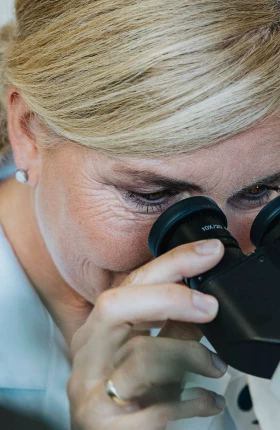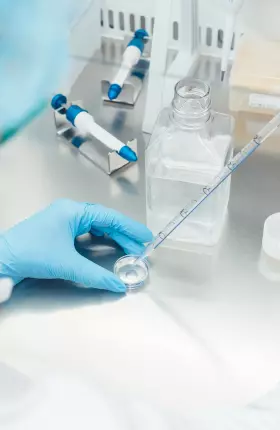Generics companies in Europe are about to feel the ground move beneath their feet—with growth opportunities contracting in some sectors and flourishing in others.
The disruption has two sources: unrelenting commoditization in the market for generic versions of primary-care products—the industry’s mainstay for years—and a pronounced shift in the type of products losing patent protection. From 2014 to 2020, two-thirds of the value of products losing patent protection in Europe will be specialty drugs and biologics.
These developments paint a pretty bleak picture for the European generics market—at least, that’s what conventional wisdom holds. The reality, though, is more complex. Without question, there are great challenges—especially for companies that are heavily dependent on less differentiated generics. But there are also opportunities:
- Generics companies that are focused on traditional primary-care products will certainly have to scour their operations for ways to boost efficiency. But squeezing costs isn’t the only path to success. Companies in other industries have found additional creative ways to deal with commoditization. Generics companies can take a page or two from those playbooks, including deciding whether to tap into the next growth wave—specialty drugs and biologics—by investing in new capabilities.
- Companies that originate patent-protected products will continue to aggressively defend their turf against inroads made by generics, but they’ll also have many more opportunities to target the off-patent products of their rivals—particularly specialty drugs and biosimilars, which have higher barriers to entry than standard generics.
An Era of Disruption
Standard generics—which are typically undifferentiated, easy-to-make drugs often sold as pills—are undergoing steep price erosion. Four powerful forces are at play here: intense pressure from payers, an increase in the bargaining power of distributors and pharmacies, the continued fragmentation of the generics industry, and the persistence of barriers that impede the spread of generic drugs in many markets.
These forces aren't having the same kind of impact on two types of products at the other end of the spectrum: specialty generics, which include inhalable products, eye drops, topical treatments, and certain injectable therapies; and biosimilars, which compete with off-patent biotech products. As more of these products lose patent protection in the coming years, companies that are able to launch generic versions will have a powerful and profitable opportunity for growth.
But this is hardly a slam dunk. These products are more difficult to develop and produce than standard generics, and they typically require a more specialized sales effort. Moreover, the off-patent products they target are closely guarded. Originators use a mix of legal, regulatory, commercial, and product development strategies to protect market share well after patents have expired. So while originators hold about 55 percent of the market for standard generics in the six countries we examined, they have 65 percent of the market for specialty generics. They’re even more entrenched in the biologics segment, where their stake is 85 percent or more.
That isn't stopping generics companies, which are investing aggressively to dislodge technology and legal barriers. And some originator companies will enter the fray themselves, marketing off-patent versions of the specialty drugs and biotech products developed by their big-pharma rivals. As a result, we expect that by 2020 about 70 percent of generics industry profits in the six markets will come from specialty generics and biosimilars—up from about 50 percent in 2012.
Lessons from Other Industries
Companies need to decide whether they will embrace commoditization by adapting to compete in a fundamentally less profitable business, whether they will defy commoditization by shifting toward higher-margin segments, or whether they can do both—by using different business models simultaneously in different segments. And although there is no blueprint for thriving amid intense disruption, other commoditized industries offer important lessons.
Airlines show the value of a relentless focus on costs. Airlines figured out years ago that the lowest-cost company wins. Here are some of their tactics:
- They offer point-to-point connections when possible—instead of feeding passengers into hubs.
- They operate a standard fleet of airplanes to achieve economies of scale in maintenance.
- They have shifted to online booking and check-in.
Some generics companies have already embraced this mindset:
- They have pared down the number of SKUs they offer.
- They have redesigned production so that certain sites focus on particular technologies or processes—a shift that reduces overall complexity.
- They are extending simplification to other areas of the business by standardizing regulatory-approval filings across markets, for example, and switching to uniform packaging.
Textile manufacturers hone critical skills. Speed is crucial in the fashion business. The textiles industry has developed systems for moving hot fashion trends onto retail floors with lightning speed:
- Systems include processes for monitoring fashion trends as well as fast copying and prototyping of designs.
- Using speed as a competitive weapon typically involves a network of small and midsize companies collaborating under the leadership of one orchestrating company that connects demand and supply—and ensures that requirements for product characteristics and quality are met.
To take a similar tack, generics companies need to rethink their traditional development and pipeline-management processes:
- This requires a faster, decentralized analysis of demand patterns to spot untapped opportunities and translate them into development and fulfillment programs.
- Companies targeting the market for more differentiated generic products are using new methods to trim development time and cost.
Winners in steel and electronics focus on differentiated products. Some steel companies have targeted higher-margin segments, and electronics makers have figured out how to differentiate their products through innovation:
- Companies focused on steel plates with special geometries and grades—or on extremely durable and corrosion-resistant steel made for special applications, such as engineering and oil and gas—have outperformed competitors that are deep into highly commoditized segments, including shipbuilding and construction.
- Smartphone companies that cloned market-leading products have progressively added new features, such as an enhanced user interface to distinguish their devices.
The obvious answer in the generics industry is to focus development and commercial efforts on more differentiated products and enhance existing products when possible:
- Generics companies are already venturing into new segments, including specialty generics and biosimilars, and building a full complement of new development skills—internally and through partnerships—in order to succeed.
- There's room to innovate in the traditional generics industry, too—for example, by introducing fixed-dose combination products and slow-release formulations that allow less frequent dosing.
Electronics companies revamp their business model. Electronics companies are increasingly moving toward an asset-light business model to boost long-term profitability:
- Some companies have sold or spun off their entire manufacturing operation—including the production of personal computers and printers—and are building up their higher-margin, less asset-intensive software and services businesses. In doing so, they have accepted a temporary drop in revenues in return for higher long-term profits and growth opportunities.
- Other electronics companies have outsourced their sales and service operations to partners and franchise chains.
Generics companies should also assess their relative strengths, capabilities, and scale, and alter their business model where such changes can boost overall returns:
- Some generic companies are going asset-light by shedding manufacturing and outsourcing production to contract manufacturers.
- Meanwhile, others are doing the opposite, focusing on developing, registering, and manufacturing products, and then partnering with other players that have the scale to successfully market those offerings.
It’s one thing to know what has to be done to respond to the upheaval in the generics industry—it's quite another to execute on that insight. Transformations like these are not onetime events but multiyear processes that require determined leadership, a clear strategy, and robust planning of multiple aspects of change. As in other industry disruptions, incumbents face the greatest challenges. After all, newcomers have the advantage of being able to design a business model tailored to the current market realities. But existing companies have to change long-held—and often previously successful—strategies, processes, and beliefs. And perhaps the most important change will be the ability to adopt a new mindset—to move away from thinking about how to win in a successful, lucrative industry and instead zero in on creating a decisive advantage in a market with fundamentally diminished prospects.
Generics companies will need to assess which areas of the market are most attractive, adapt existing assets and capabilities to match up with those segments, and determine the financial resources required to fund the journey. In many cases, this will require the ability to consistently deploy different strategies, tactics, and skills simultaneously in different markets and regions—expertise that most players are only beginning to develop.
And as the pressure mounts on generics companies, originators should expect a new breed of more fit and focused competitors. That means originators will need to work harder to hold on to differentiated segments that were more easily defended in the past. And they should take another look at opportunities in postpatent specialty drugs and biosimilars—products that could end up being a better match with their skills and strengths than standard generics ever were.






